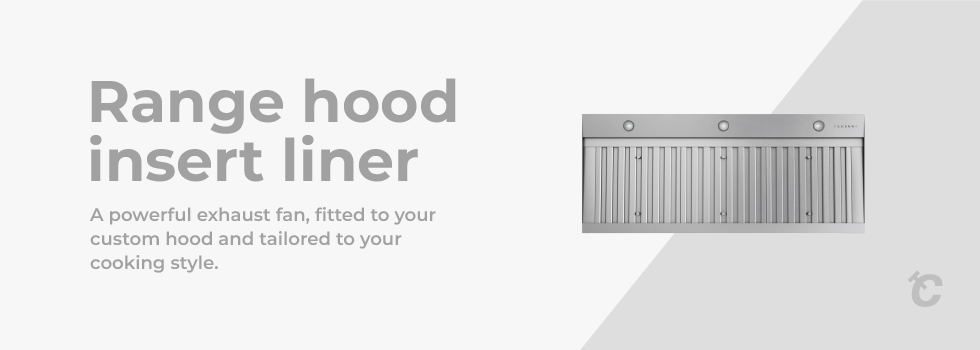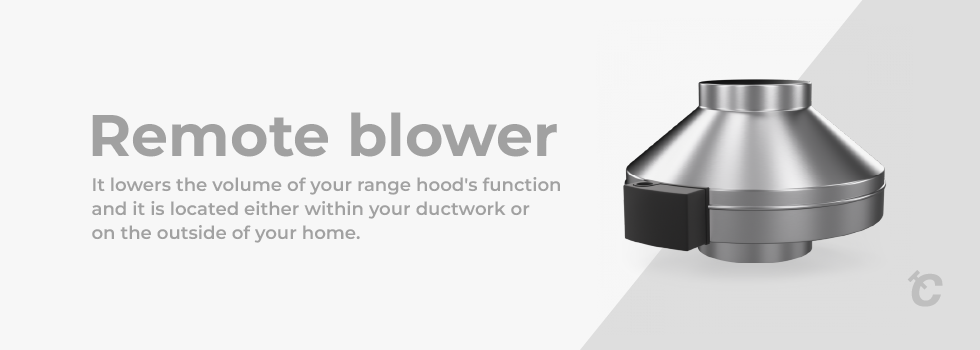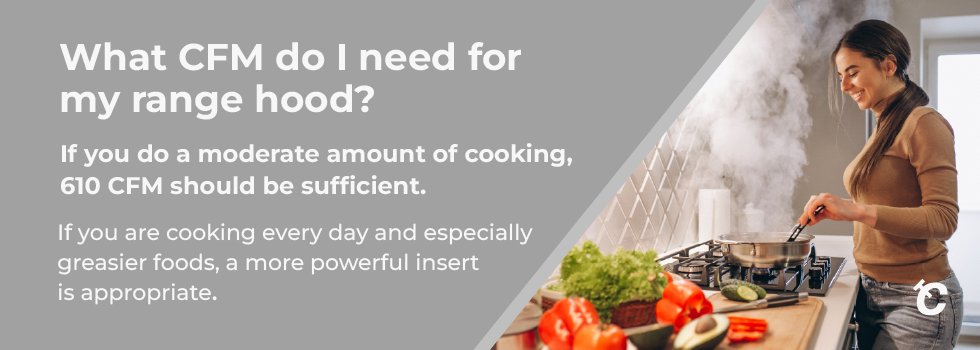The powerhouse behind your hood
YourCustom CopperSmith Range Hood does a lot more than just look beautiful. The functionality lies under the hood, where a fan liner and motor work to collect kitchen exhaust and filter it out of your living space.
What is a range hood insert liner?

Sometimes called a "liner," or "insert," this is a powerful exhaust fan, fitted to your custom hood and tailored to your cooking style.
CopperSmith's range hood inserts
At World CopperSmith, we create our own top-of-the-line range hood inserts in-house.
That means that no matter the CopperSmith hood size, style, or requirements, we have you covered with a durable and powerful exhaust fan.
When choosing a fan insert, you'll have to decide along two main factors.
Ducted/ductless

First, you'll decide if your fan insert should be ducted or ductless. You may have already decided whether your range hood will vent to the outdoors or filter your exhaust without ductwork.
If your range hood is ductless, the decision is already made!
A ducted insert is the simplest, with stainless steel baffle filters that catch grease and grime as the exhaust passes to the outdoors. A ductless insert will come with charcoal filters, which thoroughly clean the air passing through before it is returned to your kitchen.
Integrated/remote

Next, you'll need to choose where the blower is located - the device that moves the air.
If your range hood is ductless, the blower is automatically integrated (or "local"), but if your hood vents to the outdoors, then this decision will be important in setting up your range hood.
An integrated blower is located inside the range hood itself. This will be less expensive but have a higher sound rating.
A remote (or "in-line") blower is located either within your ductwork or on the outside of your home. Requiring some additional pieces and more difficult installation, a remote blower will be more expensive but lower the volume of your range hood's function.
Ultimately, this is a matter of personal preference.
What CFM do I need for my range hood?

Cubic feet per minute is the measure of an exhaust fan's power, its ability to move polluted air through filtration.
On the low end, our insert fans come at a CFM of 290. The high end for a kitchen blower: 1260 CFM. Our BBQ inserts go up to 2300 CFM for the intense fumes created during that cooking process.
If you do a moderate amount of cooking, 610 CFM should be sufficient. If you are cooking every day and especially greasier foods, a more powerful insert is appropriate.
All of our fan inserts come with variable speeds, allowing you flexibility in your choice.
To choose the right size range hood insert, your hood cutout should be at least 1/8" larger than your insert fan. For detailed sizing, see our guide.
How do you install a range insert?
Installing a range insert is simple and intuitive, involving the removal of your hood's mesh filters and lining up your fan with ductwork. Detailed instructions can be found in our installation guide.
How high should a vent hood be?
The best mounting height for your range hood is typically 2 feet above your range. If your cooktop is exceptional or you have custom cabinets to protect with an under-cabinet range hood, this measurement may vary slightly.
How do I buy a hood insert?
Shop our collection of range hood inserts. With an extensive selection of sizes and CFM ratings, find the perfect insert for the best range hood money can buy. Plugin your shipping zip code for a postal estimate and get your range hood insert now!

